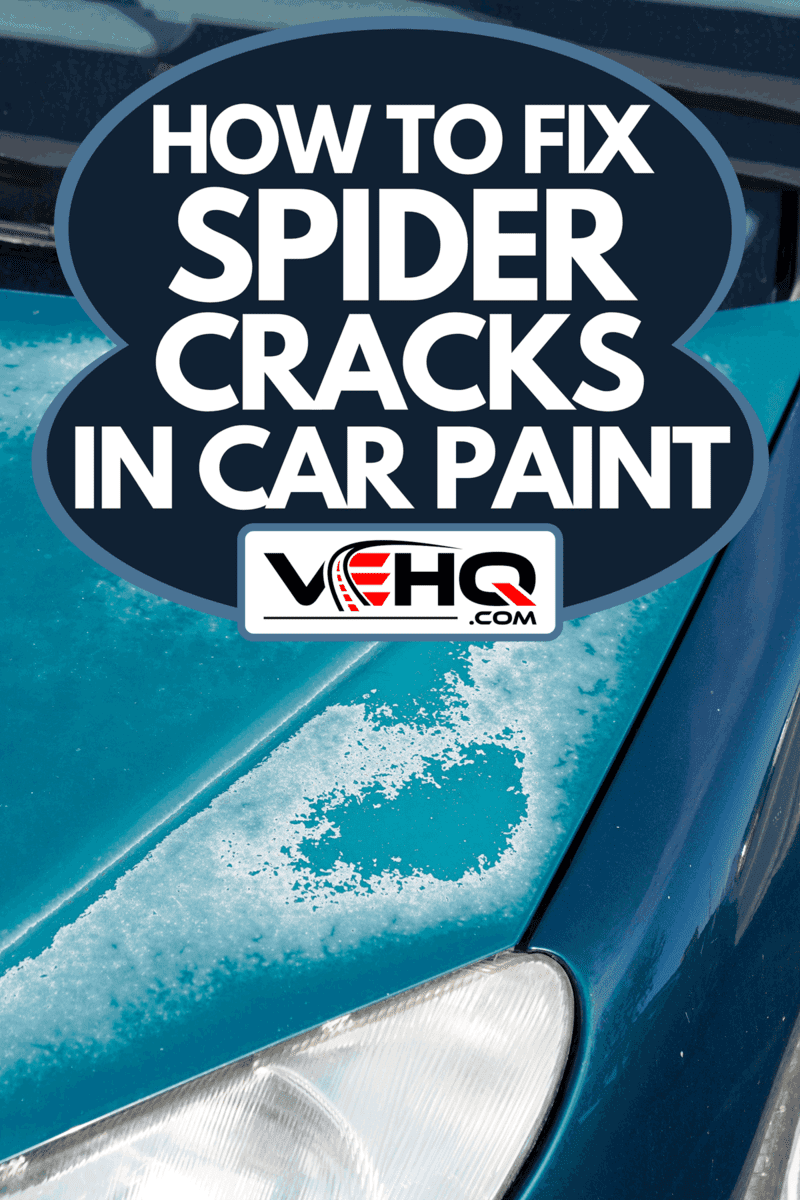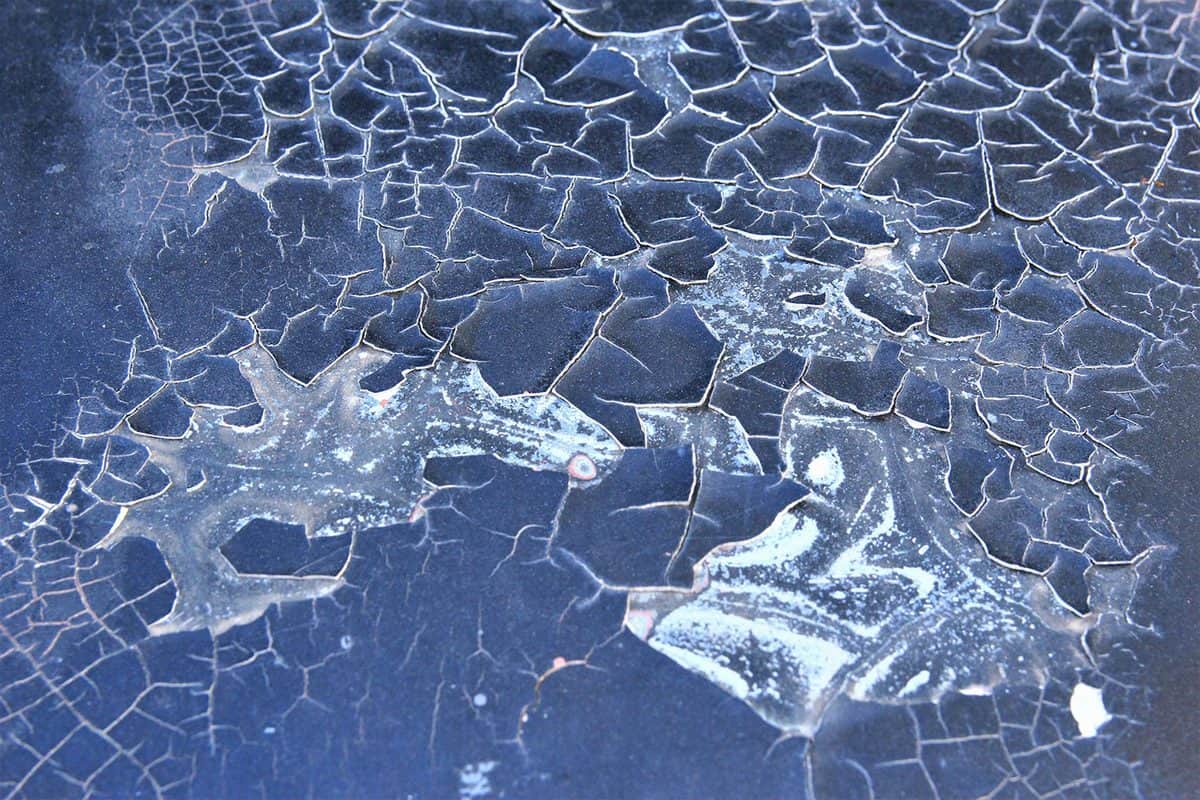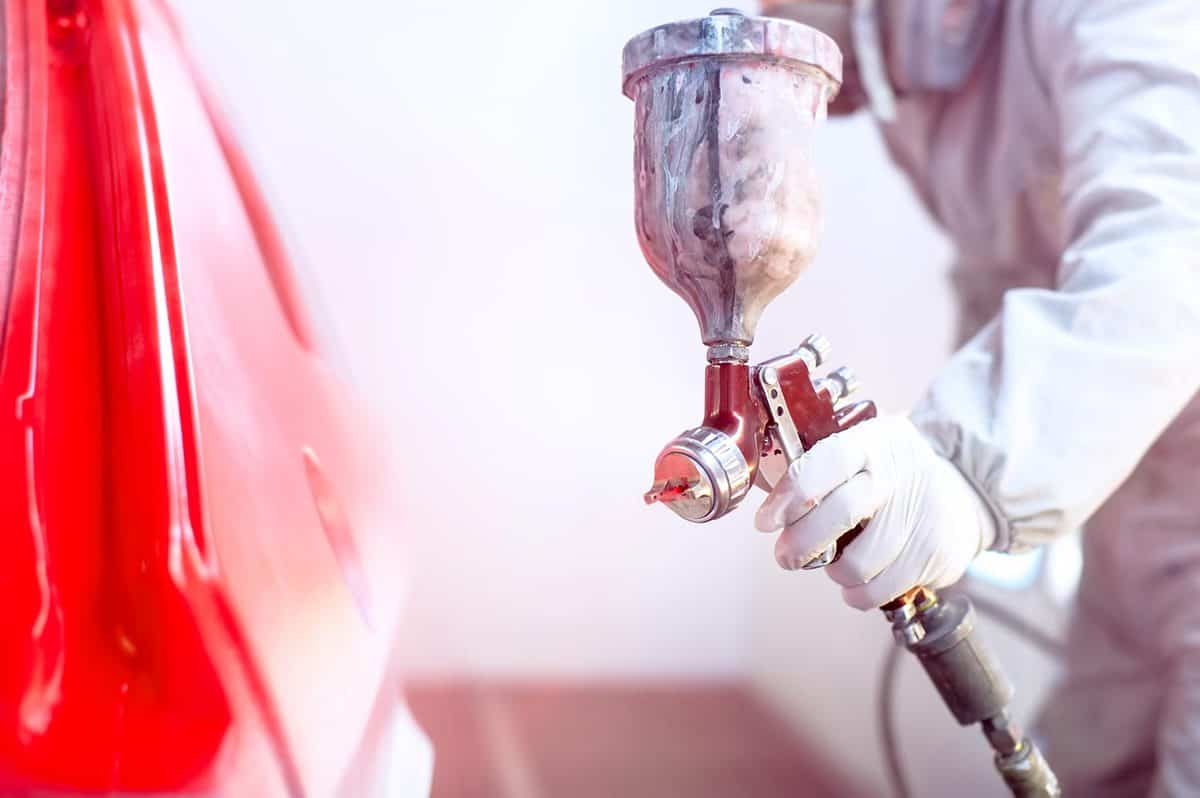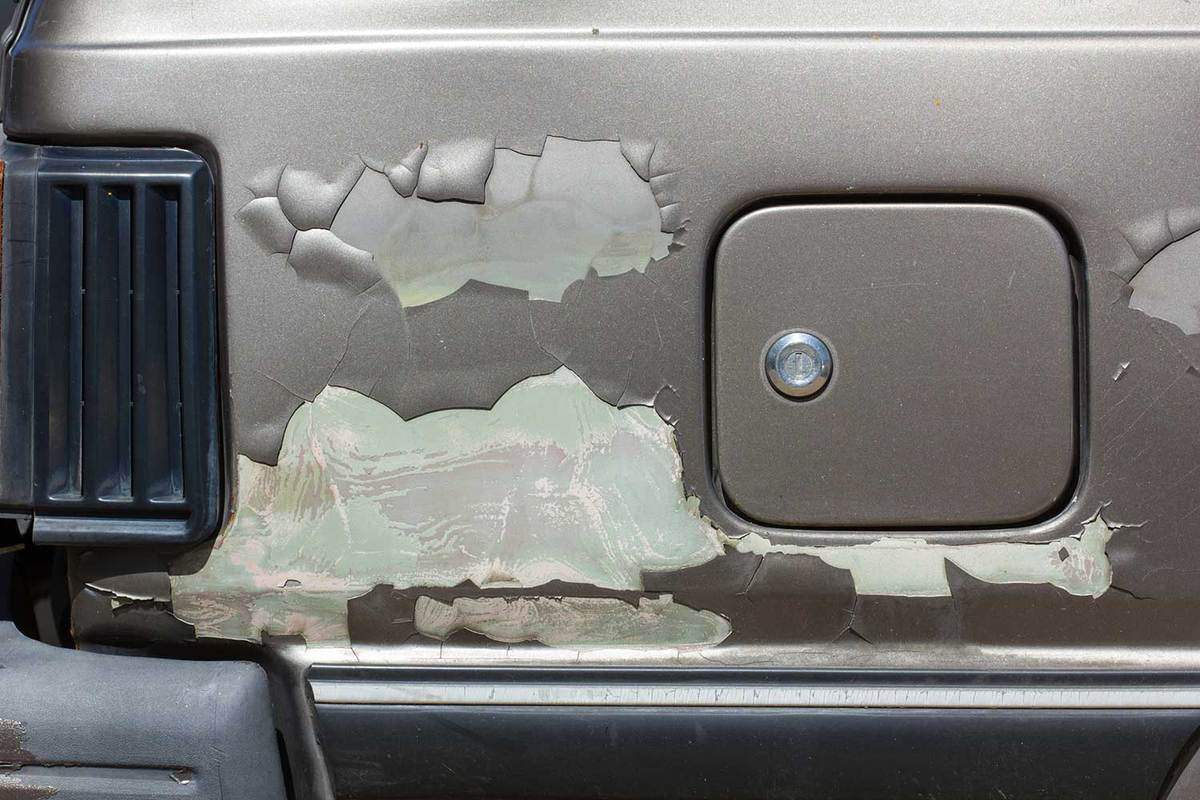Spider cracks are web-like imperfections that can happen to a car’s bodyshell. It’s unsightly and may lead to more serious issues if left unchecked. So how can you repair spider cracks in a car’s paint? We researched for your convenience, and here’s what we found.
Start the spider crack repair job on your car’s paint by preparing the offending areas. Mask the locations with covers and masking tape that don’t need fixes. Also, don’t forget to wear protective gear to prevent health complications during and after the operation. Once the preparations are complete, continue with the next steps:
1. Prime the cracked surface. Use a second coat of the primer if necessary. 2. Apply a guide coat and fix issues like dents and dings that may appear. 3. Use a paint spray gun to paint the car’s bodyshell with the correct color. 4. Apply a fresh coat of clear spray and let the vehicle’s shell air dry.
This repair project might seem like a reasonably straightforward task at first glance. But missing a few vital details can promote costly mistakes. Keep reading as we talk about these steps in greater detail. We’ll also discuss a guide on how to fix cracks on a car’s clear coat.

What Causes Car Paint To Spider Crack?
Some members of the automobile community say that spider cracks in car paint come from blunt trauma. It can also happen because of weather damage or unwanted stress from inside the vehicle.
Another reason that can cause spider cracks is dry paint. This issue can occur when the coat of paint losses its oils prematurely. The surface becomes lightly fractured, looking like dry skin in cold weather. Exposure to UV rays and inclement temperature changes can cause the paint to become brittle, leading to spider cracks.

Improper paint applications can also cause spider cracks. Force drying, incorrect paint mixture, and unwarranted use of hardener can lead to thin yet widespread cracks appearing on the vehicle's paint.
Using expired or low-quality paint can also cause the paint job to dry faster than average. Make sure to check the expiry date on the paint before using it. You may rehydrate dried paint, which might be a good idea if you're on a tight budget.
But the results for reusing old paint are often temporary at best. Think about using new and high-quality paint products to ensure long-term and satisfying results. Watch the video below to learn how to reuse old paint:
How Do You Get Spider Cracks Out Of Car Paint?

Repainting the vehicle can help remove spider cracks from its paint job. But take note that you don’t need to have your car’s entire bodyshell repaired if the spider cracks are only at specific locations.
The first step that you need to accomplish for this job is to wear a face mask or respirator. Working with paint for extended periods can make you inhale toxic fumes. Work smart and protect yourself from unwanted dangers.
Then, mask the areas that you don’t want to paint, such as the windows. You may also need to sand the surface smooth, particularly if the spider cracks spread throughout a large surface area. Use an 80-grit sandpaper or sanding tool for this purpose.
Once you finish those preparations, it’s time to move to the rest of the guide:
What You’ll Need
- Masking or painter’s tape
- Paint gun
- Car paint
- Sandpaper or palm sander
- Automobile paint primer
- Paint activator
Check out this palm sander on Amazon.
Step-by-Step Guide
- Mix four parts automobile paint primer with one part paint activator in a bucket.
- Add the mixture to a paint gun and spray the previously cracked area with the paint. Remember, spray the paint by going horizontally and one layer at a time. Don't use the paint gun as if you're using bug spray.
- Spray a second coat after the first to help add definition and protection to the paint job.
- Apply a guide coat to the offending surface and sand it down with 320-grit sandpaper or sander. This step allows you to see if you need to finish further repairs, such as dents or dings.
- Buff the surface with 600-grit sandpaper or sander.
- Remove the masks covering the areas you don’t want to paint and reapply a fresh cover to those locations.
- Let the primed surface dry and cure. Then, wipe off any debris and contaminants that may remain.
- Clean the paint gun and add the correct paint to it. Spray the first coat on the offending location with medium pressure and let it dry.
- Apply an automobile clear coat and let this product air dry. Remove the covers afterward.
Additionally, you may not want to use a paint-stripping chemical solution to remove the cracked paint. This liquid product can cause a mess. Using a sandpaper or palm sander can help remove the spider-cracked paint, albeit at a slower yet safer pace than using paint thinner.
You can also watch the video below for you to check how to do the steps mentioned above properly:
How To Fix Cracking Clear Coat On Car?

Before proceeding with this operation, make sure that the offending area is clean. Wash it with an automobile-friendly solution like a mixture of light detergent and warm water. Scrub the cracked surfaces with a sponge or microfiber cloth dipped into the soapy concoction.
Once those areas are clean and dry, proceed with the next steps:
- Sand the cracked surface with 800-grit sandpaper. Make sure to remove any ridges that might remain.
- Clean and wipe off the debris caused by the sanding.
- Wet sand the offending area, but this time use 1,500-grit sandpaper. Clean the location with a microfiber towel afterward.
- Let the surface air dry. If you’re in a hurry, you can use a heat gun. However, don’t use that tool excessively or you’ll risk weakening the car’s bodyshell.
- Mask the areas you don’t want to paint with masking or painter’s tape.
- Apply a fresh layer of clear coat on the car’s surface. Keep in mind that light coats should suffice.
- Wait about 5 minutes after applying the first layer to spray a second coating.
- Remove the masking or painter’s tape and let the area air dry.
Watch the video below for a visual representation of the steps mentioned above:
Check out this clear coat for cars on Amazon.
How Much Does It Cost To Fix A Spider Crack?
Painting over spider cracks will generally cost about $300 or less, as mentioned by some members of the automobile community. However, expect to pay $1,000 or more for a full paint job. If a certified technician handles this project, the service may also include other inclusions like buffing offending surfaces, and bumper removal and reinstallation.
Read our guide on the average costs of repainting a car to help you estimate your expenses. We also have a post on car restoration costs if you want to learn more about overhauling your vehicle’s looks.
Final Words
Make sure that you use the correct materials and tools when fixing and painting over spider cracks in car paint. For instance, using improperly mixed paint may cause additional cracks to appear. If done correctly, the cracks will disappear, and your automobile will now have a fresh look.


